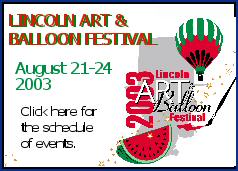|
Review by Richard Sumrall
There are many different elements that
go into the planning of a garden. When one thinks of a garden, the
usual comes to mind: flowers, trees, shrubs, bushes, rocks and
borders. According to author Nancy Ondra there's one other aspect of
a garden that is often overlooked: ornamental grasses. Ornamental
grasses, she writes, "bring exquisite textual complements and
contrasts into play in your garden … and offer unexpected life,
movement and drama to every home landscape."

Getting
to know grasses as garden plants
In her opening chapter Ondra defines
exactly what is a grass, the play of light and shadow of different
grasses, the textures (or leaf traits) that gardeners can use, and
how to choose your grasses and make them grow. One concern for the
gardener is choosing between the numerous varieties of grasses;
these can include cattails, rushes, sedges, flowered, mounded or
upright. Always choose the grasses that are most suited for your
climate, site and needs. Grasses generally require little
maintenance and are resistant to pests and diseases. The most
important task is to periodically cut them back to remove dead or
decaying foliage.
Creating
stunning combinations with grasses
One of the many advantages of
ornamental grasses is their incredible variety of colors that
accentuate the other features in the garden. Ondra discusses the
different color combinations that can bring any garden to life,
particularly golds, bronzes, blues, grays, darks and other
surprises. After describing the effect of a particular color, she
offers a "designer's choice," a selection of recommended grasses
that meet the desired effect. Blue oat grass, cloud nine switch
grass, golden bamboo and purple fountain grass are just some of the
suggested varieties. Not only can these grasses be used to play
against the other foliage, they can also create spectacular effects
against garden ornaments, planters and other objects.
Transforming every garden through four seasons
Once you become more comfortable with
grasses in the garden, you can begin to experiment with the
different varieties. Ondra explains the different uses for
ornamental grasses throughout the year, including beds and borders,
in the front yard, as a path liner, in pots and containers, as a
companion for roses, in water gardens, and as autumn foliage. The
key to year-round enjoyment of grasses is to "explore some of the
diverse landscape areas that make perfect settings for grasses and
demonstrate ways to use these versatile plants." As in previous
chapters she offers her choices for the best grasses based on a
particular use.
[to top of second column in
this review]
|
 Selecting
special grasses for special places Selecting
special grasses for special places
Sometimes gardeners are faced with
specific problems related to the land they are trying to develop.
Other times they are looking for something out of the ordinary to
make a bold statement in their garden. This chapter discusses both
of those issues. Ondra addresses the problems of hot and dry
locations, slopes, shade, and privacy. She also talks about the
luxury of having moist soil to work with in your garden. Fortunately
there are numerous species of grasses that thrive in each of these
settings. It is interesting to note, for example, that ornamental
grasses can be used to provide visual privacy and as a
barrier to unwanted sound. Sloped areas are more easily controlled
with grasses that are attractive and reduce erosion (thanks to their
extensive root systems). Although most grasses thrive in the
sunlight, some grasses do very well in the shade. Not only do they
cover bare spots under trees and sun-deprived areas, they actually
display their best color attributes in faint light.

Nancy
Ondra's "Grasses" is an essential book for anyone who enjoys
gardening or is looking for fresh landscaping ideas. The book is
very easy to read and understand, and the author's suggestions are
most helpful. Ms. Ondra is a freelance garden writer who has
experience operating a rare plant nursery. The lavish photography of
Saxon Holt is stunning and a real asset to the textual information.
This book is recommended to anyone who enjoys gardening, landscaping
or botany.
[Richard Sumrall,
Lincoln
Public Library District]

 |

